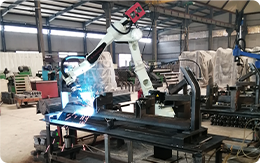 Afrikaans
Afrikaans  Albanian
Albanian  Amharic
Amharic  Arabic
Arabic  Armenian
Armenian  Azerbaijani
Azerbaijani  Basque
Basque  Belarusian
Belarusian  Bengali
Bengali  Bosnian
Bosnian  Bulgarian
Bulgarian  Catalan
Catalan  Cebuano
Cebuano  Corsican
Corsican  Croatian
Croatian  Czech
Czech  Danish
Danish  Dutch
Dutch  English
English  Esperanto
Esperanto  Estonian
Estonian  Finnish
Finnish  French
French  Frisian
Frisian  Galician
Galician  Georgian
Georgian  German
German  Greek
Greek  Gujarati
Gujarati  Haitian Creole
Haitian Creole  hausa
hausa  hawaiian
hawaiian  Hebrew
Hebrew  Hindi
Hindi  Miao
Miao  Hungarian
Hungarian  Icelandic
Icelandic  igbo
igbo  Indonesian
Indonesian  irish
irish  Italian
Italian  Japanese
Japanese  Javanese
Javanese  Kannada
Kannada  kazakh
kazakh  Khmer
Khmer  Rwandese
Rwandese  Korean
Korean  Kurdish
Kurdish  Kyrgyz
Kyrgyz  Lao
Lao  Latin
Latin  Latvian
Latvian  Lithuanian
Lithuanian  Luxembourgish
Luxembourgish  Macedonian
Macedonian  Malgashi
Malgashi  Malay
Malay  Malayalam
Malayalam  Maltese
Maltese  Maori
Maori  Marathi
Marathi  Mongolian
Mongolian  Myanmar
Myanmar  Nepali
Nepali  Norwegian
Norwegian  Norwegian
Norwegian  Occitan
Occitan  Pashto
Pashto  Persian
Persian  Polish
Polish  Portuguese
Portuguese  Punjabi
Punjabi  Romanian
Romanian  Russian
Russian  Samoan
Samoan  Scottish Gaelic
Scottish Gaelic  Serbian
Serbian  Sesotho
Sesotho  Shona
Shona  Sindhi
Sindhi  Sinhala
Sinhala  Slovak
Slovak  Slovenian
Slovenian  Somali
Somali  Spanish
Spanish  Sundanese
Sundanese  Swahili
Swahili  Swedish
Swedish  Tagalog
Tagalog  Tajik
Tajik  Tamil
Tamil  Tatar
Tatar  Telugu
Telugu  Thai
Thai  Turkish
Turkish  Turkmen
Turkmen  Ukrainian
Ukrainian  Urdu
Urdu  Uighur
Uighur  Uzbek
Uzbek  Vietnamese
Vietnamese  Welsh
Welsh  Bantu
Bantu  Yiddish
Yiddish  Yoruba
Yoruba  Zulu
Zulu Return Pulley - Enhance Your Mechanical Systems Efficiency
Understanding Return Pulleys Mechanisms and Applications
Return pulleys are essential components in various mechanical systems, playing a crucial role in the efficiency and functionality of conveyor belts, cranes, and exercise equipment. These pulleys are designed to redirect the movement of a belt or cable, ensuring that it returns smoothly to its starting position after completing its operational cycle. The functionality of return pulleys revolves around their ability to guide and support the belt, minimizing wear and tear while maximizing performance.
At the heart of the return pulley’s design is its construction. Typically made from durable materials such as metal or high-quality plastics, these pulleys are engineered to withstand significant loads and pressure. They come in various sizes and shapes, tailored to suit different applications. For instance, in a conveyor system, return pulleys can be flat or crowned, depending on the type of belt used. A crowned pulley, having a slightly raised center, helps to keep the belt centered and aligned, reducing the risk of slippage and enhancing overall efficiency.
One of the primary advantages of using return pulleys is their ability to reduce friction
. By providing a smooth surface for the belt to glide against, they facilitate easier movement, which can significantly decrease energy consumption in mechanical systems. This reduction in friction not only prolongs the life of both the belt and the pulley but also enhances the energy efficiency of the entire system, making it more cost-effective in the long run.return pulley

Return pulleys also play a vital role in the safety of mechanical systems. In applications such as cranes or winches, return pulleys help manage the load distribution and prevent overloading in certain areas. By ensuring a balanced distribution of weight, these pulleys contribute to the stability and safety of the operation, reducing the likelihood of equipment failure and enhancing the safety of operators.
In addition to industrial applications, return pulleys are prevalent in fitness equipment, such as treadmills and resistance trainers. They ensure a consistent motion of the resistance bands or cables, providing users with a smooth and effective workout experience. This versatility highlights the significance of return pulleys across various sectors, emphasizing their integral role in both large-scale manufacturing and personal fitness.
In conclusion, return pulleys are crucial for ensuring the efficient operation of diverse mechanical systems. Their ability to direct movement, reduce friction, and enhance safety makes them invaluable in a wide range of applications. As technology advances, the design and functionality of return pulleys continue to evolve, promising even greater efficiency and performance in the future. Whether in an industrial setting or a home gym, understanding the function and benefits of return pulleys is essential for optimizing the performance of mechanical systems.
-
Revolutionizing Conveyor Reliability with Advanced Rubber Lagging PulleysNewsJul.22,2025
-
Powering Precision and Durability with Expert Manufacturers of Conveyor ComponentsNewsJul.22,2025
-
Optimizing Conveyor Systems with Advanced Conveyor AccessoriesNewsJul.22,2025
-
Maximize Conveyor Efficiency with Quality Conveyor Idler PulleysNewsJul.22,2025
-
Future-Proof Your Conveyor System with High-Performance Polyurethane RollerNewsJul.22,2025
-
Driving Efficiency Forward with Quality Idlers and RollersNewsJul.22,2025





























